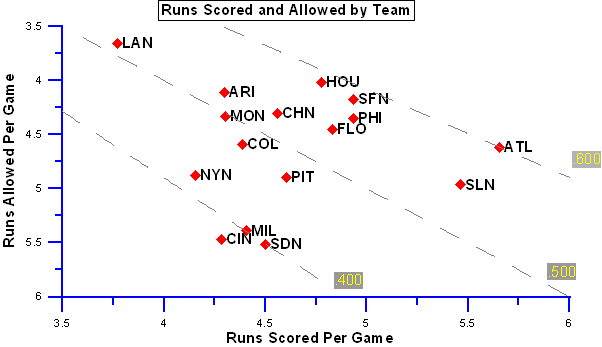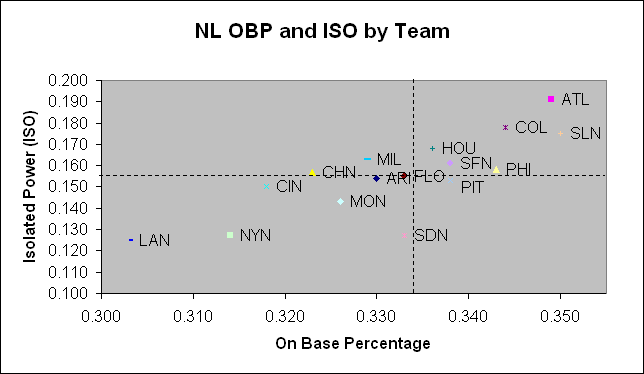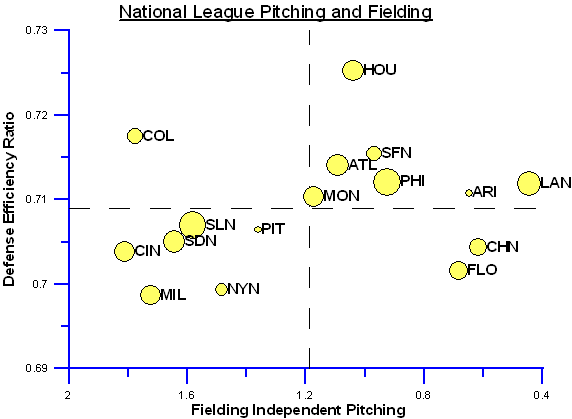Coors Park has a huge impact on fielding statistics. When you correct DER for park, the Rockies' fielding looks much better. However, while I've tried to correct these data for park factors, I can't guarantee that I did so correctly.
Still, Philadelphia and St. Louis had some great fielding this year, while the Dodgers, Cubs and Marlins were the toast of the pitching mound. Also of note is Houston, with a tremendous park-adjusted DER. Houston's park (what's it called again?) also impacts fielding stats, but there is no denying that Houston's pitching and fielding did a very good job converting batted balls into outs.
To review other team-specific comments, please refer to the team-specific graphs under development on the Baseball Graphs home page.
|


